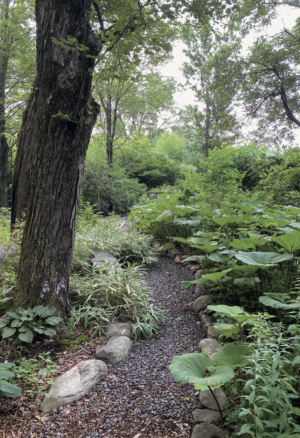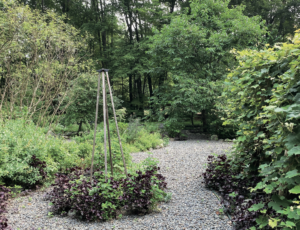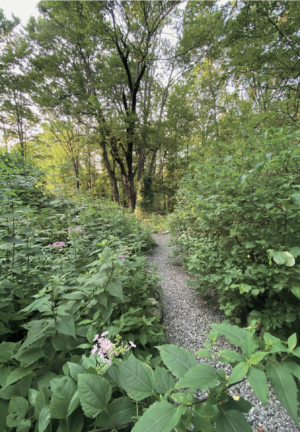7 Factors to Consider when Choosing a Planting Site
We may be in the dead of winter today, but spring is just around the corner! Which makes now the perfect time to start planning out your garden. If you’re new to gardening or homesteading, the location of your new garden is one of the first things to consider.
What exactly should you be looking for in a location? Follow this handy list and set yourself up for a successful growing season.
The following is an excerpt from Cold-Hardy Fruits and Nuts by Scott Serrano and Allyson Levy. It has been adapted for the web.
When selecting the best planting site for your plants, there are a number of items to consider.
1. Determine the Soil Content at Your Planting Site
Does the soil at your location contain a heavy amount of clay, sand, or stone, or is it loamy? Depending on how large a planting area you have, there could be many different types of soil on your property. Taking soil samples from several of the places where you want to plant can help determine this. Many good sources of information on soil types can be found in university agricultural programs.
 2. The pH (Acidity) Level in Your Soil
2. The pH (Acidity) Level in Your Soil
Another factor to take into consideration is the pH (acidity or alkalinity) of your soil. Most plants can live in the slightly acidic range from 6.5 to 5.5 pH. But certain plants require nutrients that can only be absorbed into the root system based on specific pH levels in the soil. Soil testing is one of the best ways to determine what type of soil you have. You can do this by contacting your local university agricultural extension service or the agricultural testing labs in your area. These organizations can sometimes provide soil testing services, in addition to selling simple soil testing kits with instructions that allow you to test your own soil, and can advise what to do if you need to change the acidity levels of your planting site.
3. Soil Depth in the Planting Area
It is also a good idea to understand how much topsoil you have to work with. Some planting areas have deep soil with a depth of 5 feet (1.5 m) or more before you hit bedrock. Other areas might have shallow soil with only 1 foot (31 cm) to work with. Sometimes digging test holes in several places may help you determine the depth of your soil in order to understand the best place to plant trees on your property. If you have lots of choices about where to plant, choose a site with deep soil, though most plants are adaptable and will tend to have horizontal root structures if they are planted in shallow soil areas. If you have soil that is only a few feet deep, it may benefit your trees to plant them in large spreading mounds. These can be 6- to 10-foot (1.8–3.1 m) wide circles that gently rise to a 1-foot-tall (31 cm) slope. A plant is buried in the center of the mound so that its roots will have more room to spread out. The only drawback to this planting method is that every few years, you will need to add soil to the width of the mound to give the roots more room as they grow outward.
 4. Determine Your Light Exposure
4. Determine Your Light Exposure
The amount of light that shines directly on a planting area determines the light conditions, which can range from full sun to full shade. This is referred to as a planting aspect, and it will help you determine what type of plant will thrive in a particular site. For the best results locate a planting area that has a large amount of south-facing sun exposure, which is easy to locate with a compass. Following is a general guideline for evaluating the different aspects of sunlight exposure to determine what plants will grow well in a particular planting area. If you only get three hours of sunlight but those are in the hottest part of the day (noon until 3 p.m.), that may be better sun exposure than four hours of sun in the cooler part of the morning. Also keep in mind that the intensity and amount of light exposure changes at different times of the year.
Here are some general guidelines for sun exposure:
Full Sun: 12 to 8 hours of direct sunlight.
Part Shade: 6 to 4 hours of direct sunlight when the sun is hottest (midday to afternoon).
Part Sun: 4 to 2 hours of direct sunlight, generally in the early morning or late day.
Full Shade: No direct sunlight; filtered sunlight to complete shade.
 5. Determine Your Hardiness Zone
5. Determine Your Hardiness Zone
Most plants are rated by their hardiness factor, which is defined as the ability of a plant to survive the coldest temperatures of the winter. In addition to the cold, it measures a plant’s ability to tolerate heat, drought, flooding, and wind. A hardiness zone is a geographic area defined to encompass a certain range of climatic conditions relevant to plant growth and survival. The USDA Plant Hardiness Zone Map is the standard by which gardeners and growers can determine which plants are most likely to thrive at a location. The map is based on the average annual minimum winter temperature, divided into 10°F (6°C) zones, which was last updated in 2012.1
6. Microclimate
The microclimates in your planting area can also play an important role in a plant’s ability to survive. A microclimate is a local set of atmospheric conditions that differ from those in the surrounding areas. This can be as little as a few degrees, but may be substantial enough to allow a less hardy plant to grow in an area where it normally would not survive. If you live in an urban area, hard surfaces like asphalt and concrete absorb the sun’s energy and can make a planting environment hotter. South-facing areas are exposed to more direct sunlight and can be warmer for longer periods of time. Also keep in mind that cold air tends to sit in the lowest parts of a planting site, so those areas can stay colder for longer periods of time. Those spots may be more difficult to grow a plant than in a warmer site only 30 feet (9.1 m) uphill from that location.
7. Determine Your Water Source
In the first year a tree or bush is planted, it will generally need 1 inch (2.5 cm) of water a week to stay healthy. So another important factor that goes into consider- ing where to plant must also be convenient access to water.
Notes
- Agricultural Research Service, “USDA Plant Hardiness Zone Map,” USDA, https:// planthardiness.ars.usda.gov

 2. The pH (Acidity) Level in Your Soil
2. The pH (Acidity) Level in Your Soil 4. Determine Your Light Exposure
4. Determine Your Light Exposure 5. Determine Your Hardiness Zone
5. Determine Your Hardiness Zone